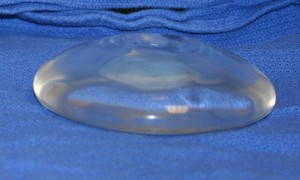We plastic surgeons are always learning and trying to put science behind what we do. There was a good study done years ago looking at breast implant incisions- comparing the periareolar (a little half circle at the areola skin junction) versus the incision under the breast. The study found there was no difference in the change in sensation between the two incisions based on where you cut, but there was a change which correlated with how big you go.
The October 2011 issue of Plastic and Reconstructive Surgery has an article entitled (hold on- it is a long one-) “Sensitivity of the Nipple Areola Complex and Areolar Pain following Aesthetic Breast Augmentation in a Retrospective Series of 1200 Patients: Periareolar versus Submammary Incision.” 
They studied 1200 patients from 2004-2010. It excluded any patients who had any other kind of surgery like a breast lift, inverted nipple repair, etc.
Findings:
- 95% had unaltered postoperative nipple areola complex sensitivity at 6 months
- When pain occured it was always on one side only
For the 5% of patients who had pain, they found
- no differences for age
- no difference for implant positioning (in front of or behind muscle)
- there was a difference between where the incision was, with periareolar incision having a 2-3x difference
Issues:
- retrospective study
- didn’t measure precisely using a pressure sensory device testing (as the other studies in the past have)
My thoughts? The chance of having problematic sensitivity issues following breast augmentation is a low rate. This study is not as elegant as others in the past, as it does not use a scientific tool to assess the change in sensation. BUT it does have large numbers, and its results are statistically significant.
I do all the incisons. The periareolar incision was a favorite of mine for years in the past. I think it has many benefits: it is an easier to hide incision, particularly for my patients with darker skin tones; it can be reused if you have issues in the future; it is hidden under your bra; and it is where you will get a scar if you ever need a breast lift. As for sensitivity studies, I have always relied on the original study cited by these authors which showed no change in sensation with where you put the incision, but rather how large you go. This new study published this month indicates the prior study may be off, and attributes it to the small numbers in the study. This is a valid criticism. In educating my patients about incision choice, I will include this new study, coupled with what I have learned about capsular contracture rates, the periareolar incision, and biofilm. The inframammary incision may be better.
